© All rights reserved 2019
25 Fundamental Tips On Sports Photography For Beginners
In this post we are going to layout and discuss what I feel to be some of the best tips and techniques for Sports Photographers that I have either learned or experienced in my time as an action shooter. You may have more, or you may disagree, but what we do is an art form and that means everyone can and should have their own unique style.
For me Sports photography is my passion and the ultimate challenge. It’s one of those forms of photography that you can try to be ready for, but never be fully prepared. If I go to one side of the field and the play goes to the other, it’s a major let down. However, if I guess right, I’m the best action photographer around (Humility is key here).
But before I get on a tear of my love for the art of Sports Photography, let’s start discussing some ides that might help you on your way to becoming a better sports photographer:
1. Know The Sport You Are Shooting
Before even working on your photography skills, understanding the game is the first thing you should do as a sports photography enthusiast. Why? Because understanding the sport and its rules will put you at a better position of knowing what to expect in the field, which equipment to use, how to plan your shooting positions, know what actions to anticipate from the players and the images to look out for. This is the great leverage that will see you perfect your craft in no time.
2. Plan Your Shooting Positions
I would say I recommend, but that would be an understatement, so I will say, ” It’s mandatory” that you arrive at least an hour before gametime to get set up. This period before the game should be used to plan your shooting positions so you are better prepared as the sport progresses from start to finish. Here are a few pointers to consider:
(a) Always ensure that when shooting you are in a position where your subject is facing you.
(b) Make sure when shooting the sun is behind your back so as to guarantee your subject is well lighted.
(c) Knowing the game means you can anticipate the course of action in the field and position yourself correctly to capture the best shots possible.
3. No "Chimping"
Chimping is a common term used in the photography world to refer to the habit of always checking every photo on the camera display immediately after you take it. Why is chimping so bad and counterintuitive?
(a) You could lose the opportunity to capture some great shots while your eyes are glued to your camera trying to analyze the image you just captured.
(b) Chimping means getting your eye off the game, and this could lead to a player crashing into you, getting hit by a ball or being involved in other incidents on the field.
-For beginners, we recommend no chimping at all, but as you progress into becoming a pro sports photographer, you could learn the perfect time for chimping during games.
4. Stop With The On Camera Flash (Speedlight)
This is a rule in sports photography which most beginners are not aware of: The use of on-camera flash is a big No No (Or should be) during a play because the flash is an absolute distraction to the athletes.
Yes, in certain instances like Hockey or Basketball there are flash units built into the arenas that are tapped into by the photographers, and these are used during the games. BUT, you are talking about flash units placed well above the game and the players, not some photographer with a speedlight at eye level.
Big Difference!
That being said, you CAN toss this out for youth sports because at younger ages it’s less about performance and a bit more about making memories. However, if you get a crazy parent on you, you’re on your own.
5. There Is More To Photograph Than Just The Action
Sports photography is not only about the action on the field but everything to do with the game. From the setup to the fans, to the mood of the game, to the pre-game rituals and the post-game events.
So, don’t capture images of the action of the sport only. It’s imperative also to get some amazing shots off the field.
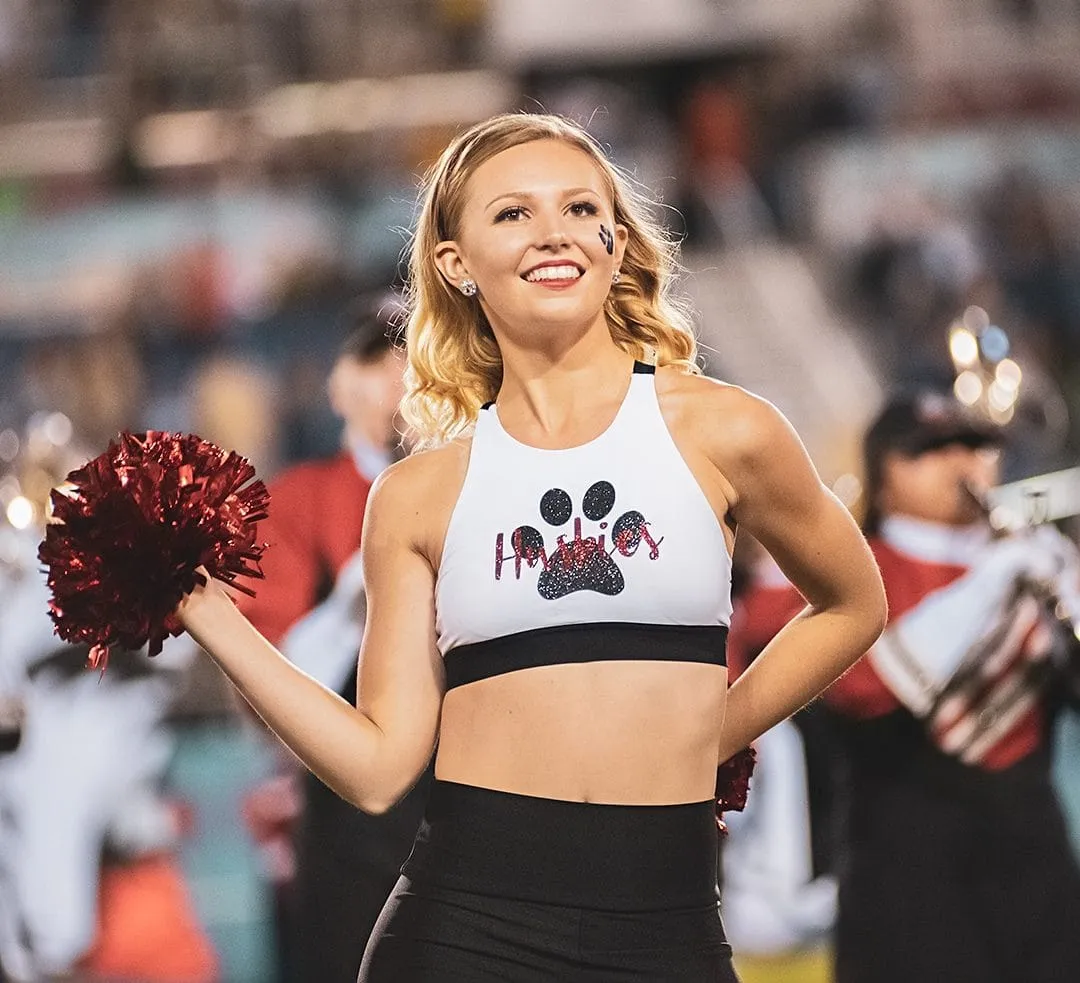
6. Implement the mantra: Focus, Face, Action, Equipment
With every shot you anticipate capturing, always have the following in mind.
(a) Focus- your image should always be in sharp focus. Avoid blurred images.
(b) Face- try to capture the athlete’s facial expression.
(c) Action- your image must contain some action, either an act of athleticism or a display of emotions.
(d) Equipment- your image should contain at least one of the equipment’s used in the game such as a ball or a bat.
7. Sports Photography Is About Being Proactive More Than Reactive
As an athlete, I always had to think about the potential outcomes of every play before the play so that I was properly prepared for any outcome. Should you be any different as a Sports Photographer?
The only way to master the art of being proactive in action photography is by understanding the game and learning its rhythm so as to know the telltale signs of what might happen next. If you are reactive as a sports photographer you WILL miss a majority of truly epic shots!
8. Be Different, Be Creative, Be Bold
Yes, there are some standard shots when it comes to sports photography, and these are the types that clients might expect to get. That’s fine, get those and earn your paycheck.
But if you are a go getter, if you want to make a name, and if you want to move up the ranks into professional sports, you have to create your look. If people can’t see your photo and reference your name, why would anyone important ever notice your work?
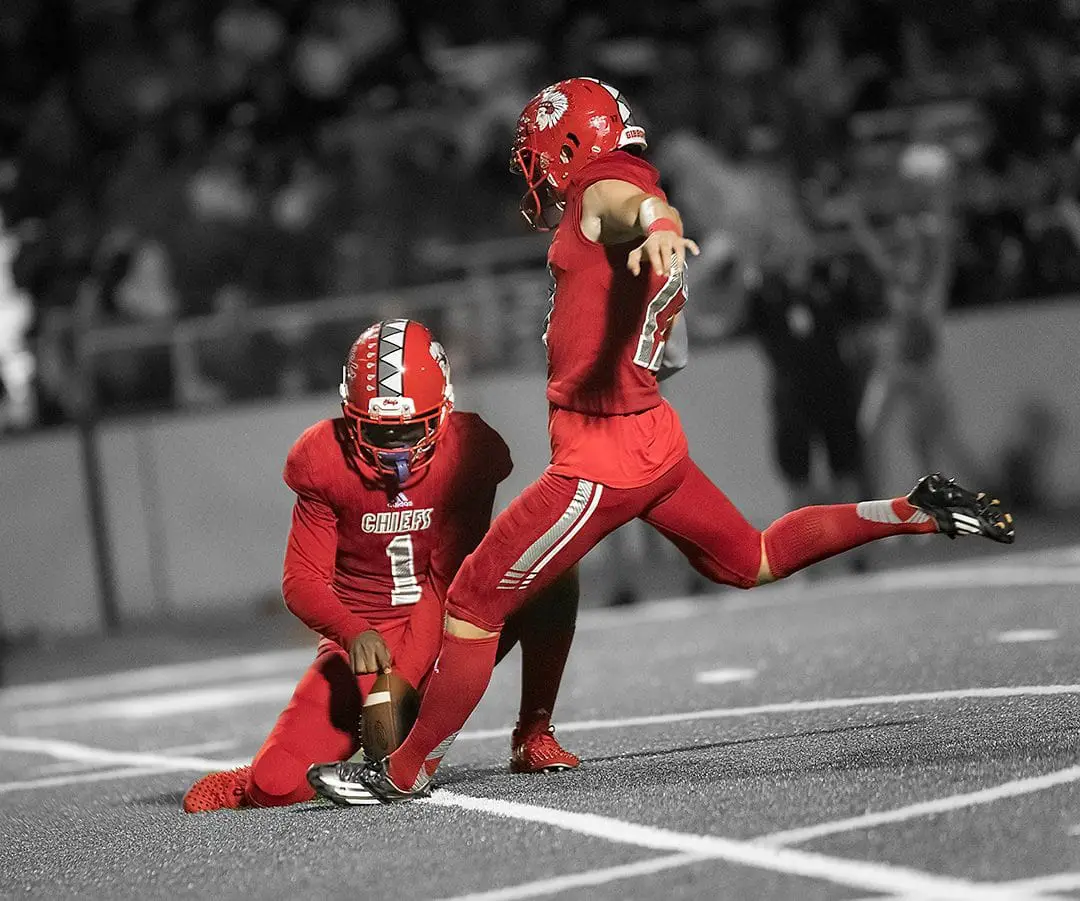
9. Lower Your Shooting Angle For Epic Photographs
Shooting from a low angle such as your knees or lower if possible allows you to capture more aggressive and dramatic shots. The lower angle also allows you to capture faces under the helmets and hats easily. Shots captured from low angles tend to have a clearer background as opposed to having the background of the grass or other athletes.
10. A Telephoto Lens Is A Must Have In Action Photography
A telephoto zoom lens is the most flexible lens available; it is suitable for use by both beginners and pro in sports photography. A telephoto zoom lens allows you to comfortably capture action that is farther away as well as isolate your subject. For a beginner, a 55-200mm f/4-5.6 telephoto zoom will be good for practice and won’t dent your pocket as much.
11. Don't Leave your Wide Angle Lens At Home
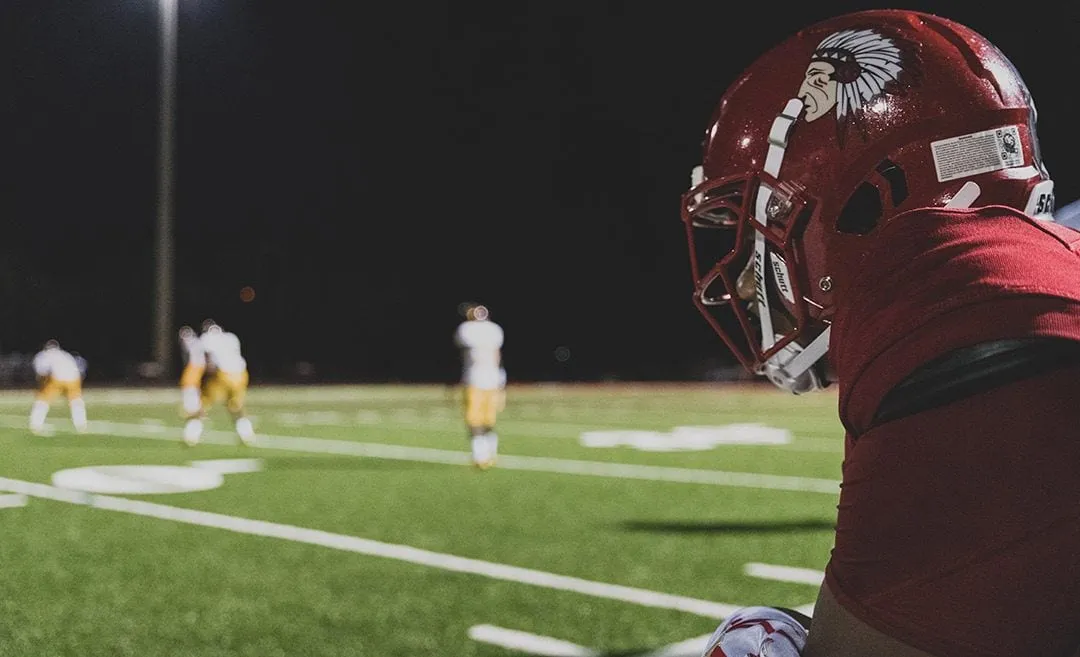
Sure, we did just say you must have a telephoto zoom lens, but that doesn’t mean you leave your wide angle lens at home. Remember: You are not just there to capture the action, you are also there to tell a story and put people in the game, and that means emotion.
The above photo may not hit the local headlines, but the coaches and the player relate to a photo like that and it will be posted on social media and printed for office walls and yearbooks.
12. Where Do I Keep All My Equipment?
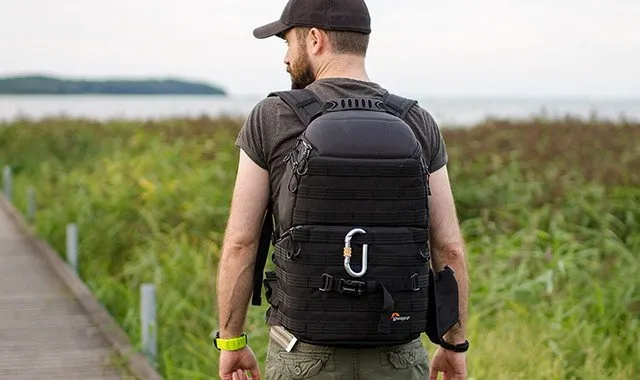
You can’t exactly keep a big camera bag on the sidelines or courtside of a sporting event, and most times you will need to keep your gear in a room that’s a 5 minute walk away. This is an obvious problem because you also can’t get everything with just one type of lens, so what do you do about having access to your gear?
Well, if you are already a pro shooting for a major publication you probably have 3 cameras and therefore no problem in this area! But for shooters like myself, I have found success in keeping a small backpack strictly for my lenses. I can’t switch on a dime, but it beats a long walk. Also, get a good camera clip like the one I got from Peak Design. This allows me to secure my Nikon D850 (Heavy) in one position while I fumble around with my expensive lenses.
13. Photo Modes May Be A Great Start For Beginner Photographers
Photo Modes are found on most (Probably all by now) DSLR and Mirrorless Cameras. These are selected via the dials like you see in the example to the right and represent different modes that the camera can operate in which essentially bring the shooter different levels of automation.
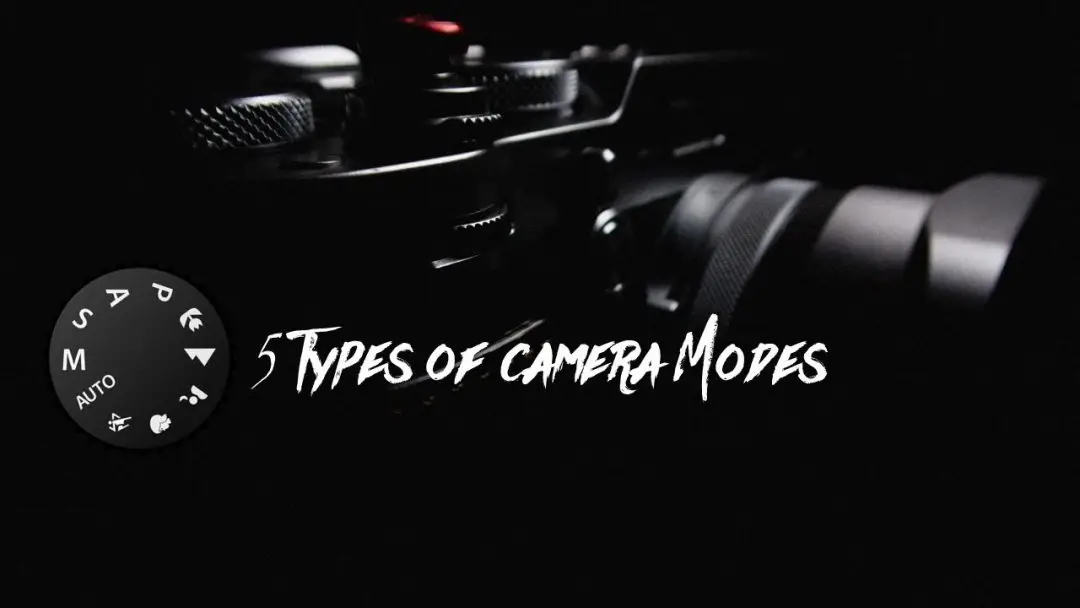
The most important modes you should understand and learn are:
- Shutter Priority (S)
- Aperture Priority (A)
- Manual (M)
- Programmed (P) Auto
It should be important to note that even though a professional will always prefer to shoot in manual for complete control, there are times when even the best photographers will turn to automation. One great example is a daytime sporting event with a bright sun and moving clouds. The light and action is changing so constantly you could expose for the clouds and get direct sunlight by the end of a play.
In this instance, you would want to turn to Shutter priority so that the camera can adjust the aperture to match the shutter speed needed for “Frozen Action”. Truthfully, in any sport you would want to use only Shutter priority so that you don’t risk the camera slowing down your shutter so much that you end up with blurry players.
14. Switch To Continuous Autofocus For Sports Photography
Single Autofocus is going to lock focus on a subject and as long as your finger is half pressed on the shutter it won’t change. Continuous focus on the other hand will “Continue” changing focus (With your finger half or fully pressed on the shutter) until you let off. This is almost self explanatory as to the benefit when shooting sports.
Another route you may want to explore is to switch to what is called “Back Button Focus”
Play Video
15. Shutter Speed Doesn't Always Need To Be Maxed Out
Sure, most sports need a super fast shutter speed to freeze the action, probably above 1000 to be safe, however, there are times when you don’t need the absolute highest shutter speed possible. One such instance is actually while shooting Night Sports. If it’s between a blurry ball, or really grainy photos from high Iso’s, choose the blurry ball.
Another instance is when I am following something or someone with the camera. A slower shutter will allow me to keep the subject in focus (If I am good) but give me a neat blurry background that can make the subject look as if they are moving incredibly fast.
16. High ISO Is there For A Reason
I know, I just demonized high iso, but not really because I was only saying that it’s not worth giving up a little blur to get a lot of grain, and I still believe that.
That being said, if you have to use high ISO use it, it’s in the camera for a reason. During some night football games when I have to hit up to 8000 iso on dark spots of poorly lit fields, I get a ton of grain, but it’s either that or stand there and get nothing. If you find yourself in this position try a software called NEAT Image. I have found this software to be highly effective for photo and video in the removal of grain without adding too much of a blur or softening effect.
17. Learn Shutter Speed, Aperture, and ISO For Better Photos
The rapidly changing conditions of a sporting event demand rapidly changing setting in your camera. You simply won’t have the time to adjust, test, adjust, test, and adjust again. You must be able to “feel” what the right settings in these three categories are and also know how to set them on your camera without having to look, sort of like typing on a keyboard. Learn your aperture and shutter wheels like the back of your hand and never miss the shot!
18. Tell A Story, Don't just Take Pictures
Sports have storylines, and although your photos won’t have motion or voiceovers, you are an artist and you must be able to learn the difference between a stack of photos and a story. This is done by getting coaches or players giving High Fives, capturing players angry after making a mistake, or tears after winning a big game. Get in there, find the emotion, and put it on your memory card!
19. Your Photos Have No Limits
As we have already discussed: Sports is about big moments and sports photography is about getting as many of these as possible. You are never going to accomplish that by worrying about how many pictures you will have to go through in post production or photoshop. Get yourself some big and fast memory cards and get everything you can, you’ll thank yourself later when you get something you didn’t even realize at the time. It happens to even the most experienced photographers.
20. Stop Looking- Keep Shooting Pictures
In line with tip 19, don’t be a true amatuer and stare at your screen after every shot. All that is going to do is ensure that eventually you miss the next moment looking at the previous one!
21. Your Mistakes Make You Better
Your first couple shoots are going to suck! But you arn’t going to know that until 6 months or a year go by and you look back at them as the pro you have become. If you are satisfied after 1 or two shoots, there is something wrong with you lol.
Every time you are editing a shoot, point out where you did something wrong or where you could have done better. In addition, follow the professional sport photographers on instagram and Twitter. When you see something they did better than you, get jelous! Tell yourself you can do that too (Because you can) and that you will the next time you are out, then do it. When you replicate that shot, not only will you feel proud, but you will have likely just learned something that’s getting you one step closer to your goals.
22. In Camera Is Different Than Out Of Photoshop Or Lightroom
So you took a photo that look “So So” when you get home. But what if you added some HDR Toning or maybe A Gradient Mask, even a little cropping. That shot could end up looking totally different than what you took in camera, but that’s ok. 30 years ago you delivered what you captured, but it’s a different ballgame today. Learn new techniques in ALL aspects of modern photography.

23. Investing In Your Photo Equipment
Sure, maybe that new camera purchase means you don’t get a vacation this year, but maybe it helps you lock down new clients that sends you on an even bigger and better vacation next year.
Or maybe you get clients that send you on vacations to shoot!
The point is that new camera gear isn’t simply an expenditure, it’s an investment. If you don’t see it as a way to earn more, grow, and get new clients, then it likely isn’t a purchase you need to make it’s probably more of a want.
24. Learn Sports Team Photography
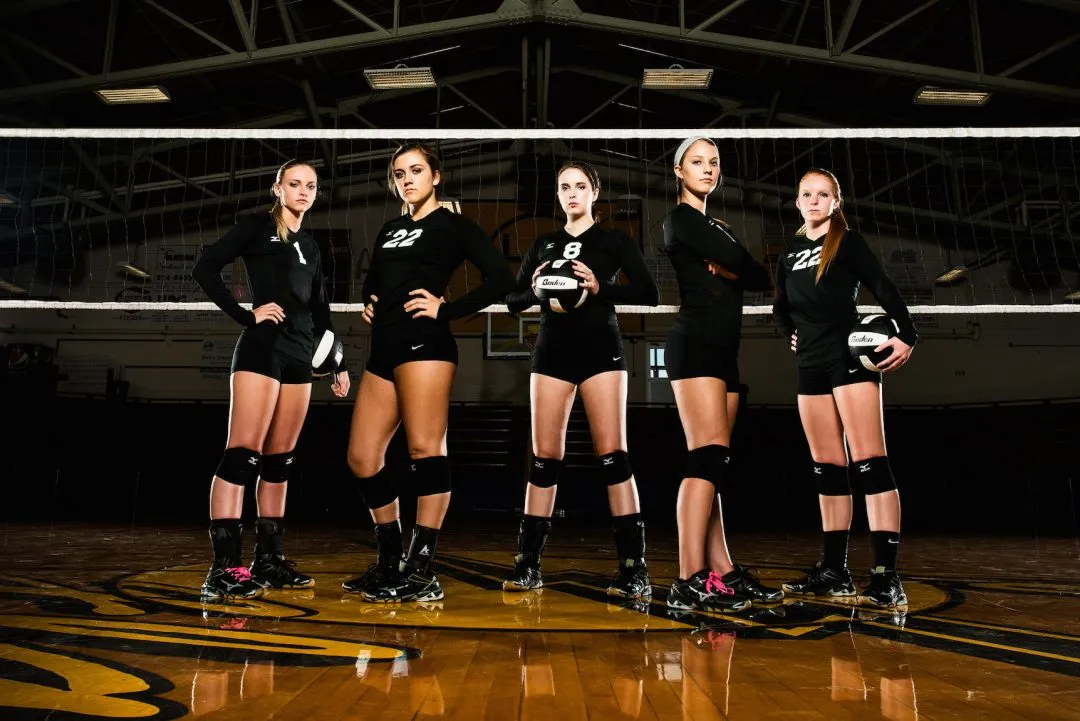
Shooting a game is completely different than taking player portraits or sports team photos and you may want to take a hack at getting in connected with a team via their need to take team photos. If you do a good job there (Show up on time, be professional, etc) it can and likely will lead to on the field work.
25. You Don't Need To Get Paid For Your Photos
Well, you should get paid for most of your photos, however, when you are starting out you should definitely shoot wherever and whenever you can to develop your skills and establish your personal look.
More important than learning may also be building relationships and networking! It’s not about what you know, it’s about who you know, and photography jobs are as political as they come. The people in major publications didn’t get there because they applied on Linkedin, they got there because the previous photographer retired or quit and they personally reached out to someone they knew or had recently met.
By The Way, don’t even assume that free will guarantee you any sort of easy access. Whenever I set out to break into a new market I will offer my services to people at no cost and you would be surprised at how little people respond or even care, and that’s even looking at my other work.
Conclusion
After reading all these sports photography tips, the hope is that you will have some sense of direction as a beginner. But the truth is, you are likely to face a good number of failures. You will also probably, most likely, suck at your first couple of attempts at action sports photography, and that is all okay! We all have to start somewhere, and every single one of us did, so don’t sweat it.
It doesn’t matter how bad of a sports photographer you may think you are. It’s about where you can end up and knowing that you can get there with the right work ethic and the patience to learn a skill and an art form like Sports Photography.
_If you are located in the South Florida area and require professional Sports Photography, please contact AH360 Photography.
Like this article?
Share on Facebook
Share on Twitter
Share on Linkdin
Share on Pinterest


